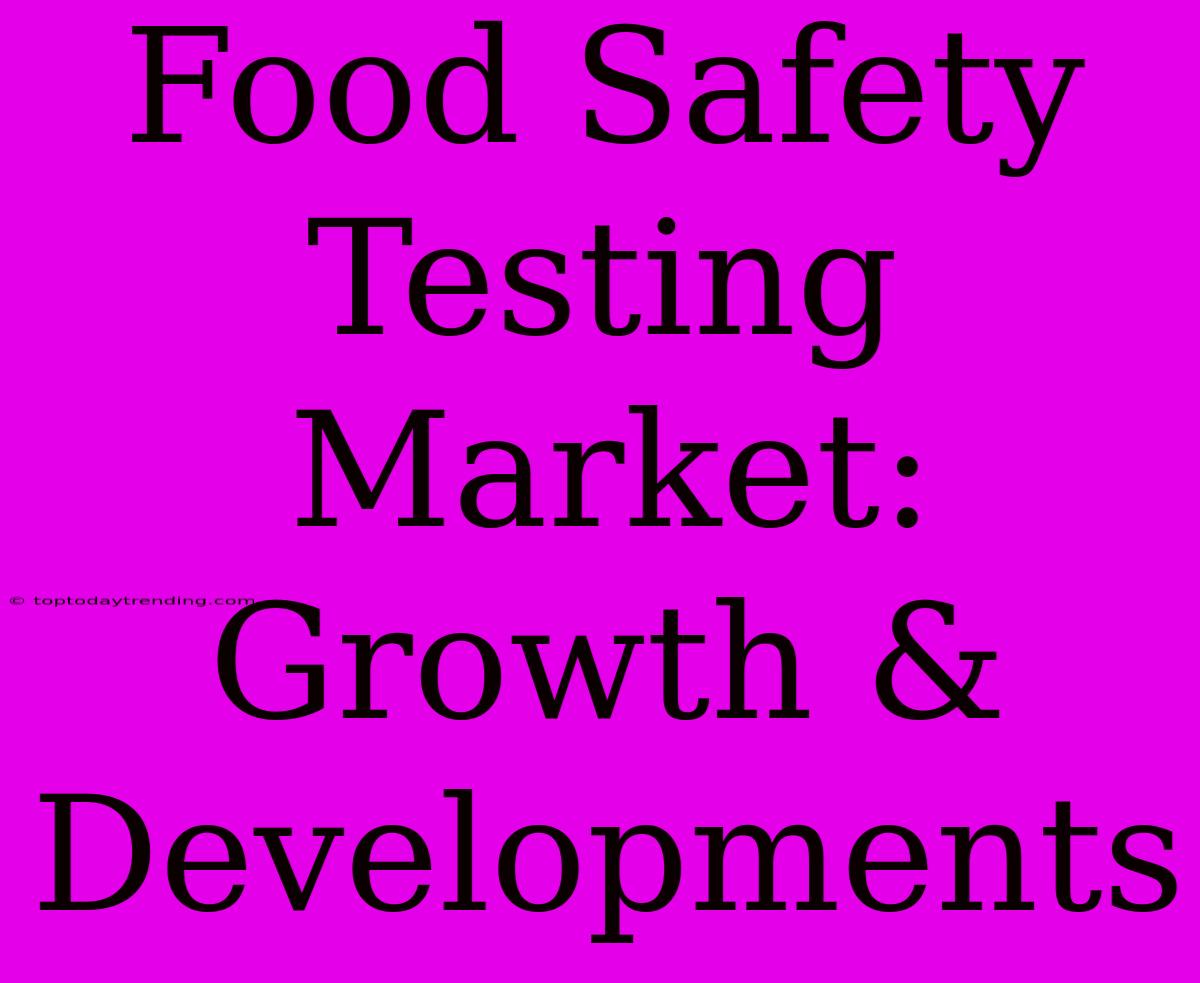Food Safety Testing Market: Growth & Developments
The food safety testing market is experiencing significant growth, driven by increasing consumer awareness of foodborne illnesses, stringent government regulations, and evolving food processing techniques. This article delves into the key drivers of this market expansion, examines the latest technological advancements, and explores the future outlook for this crucial industry.
Market Drivers and Trends
1. Growing Consumer Awareness of Foodborne Illnesses:
- Rising incidence of foodborne illnesses: The World Health Organization (WHO) estimates that over 600 million people fall ill from contaminated food each year, resulting in an estimated 420,000 deaths.
- Increased media coverage: News reports highlighting food safety scandals and outbreaks have amplified consumer concerns, driving demand for testing to ensure the safety of their food.
- Emphasis on food traceability: Consumers are increasingly demanding transparency in the food supply chain, with traceability systems relying heavily on food safety testing for verification.
2. Stringent Government Regulations and Standards:
- Global Food Safety Standards: International organizations like the Codex Alimentarius Commission and the World Trade Organization have set stricter regulations for food safety, compelling manufacturers to comply with rigorous testing protocols.
- Local Regulations: Governments around the world are enacting specific laws and regulations related to food safety, with emphasis on pathogen detection, chemical residues, and allergen analysis.
- Enforcement and Audits: Regular inspections and audits by government agencies further incentivize food manufacturers to prioritize food safety testing and maintain compliance.
3. Technological Advancements in Food Safety Testing:
- Rapid Detection Methods: Technologies like PCR (Polymerase Chain Reaction), ELISA (Enzyme-Linked Immunosorbent Assay), and Lateral Flow Assays have revolutionized food safety testing by enabling rapid and accurate detection of pathogens, allergens, and other contaminants.
- Next-Generation Sequencing (NGS): This advanced technology offers comprehensive and detailed analysis of microbial communities in food samples, providing insights into the presence of potentially harmful organisms and enabling more precise identification.
- Mass Spectrometry: Mass spectrometry techniques, including LC-MS (Liquid Chromatography-Mass Spectrometry) and GC-MS (Gas Chromatography-Mass Spectrometry), are highly sensitive and effective for detecting and quantifying residues of pesticides, herbicides, and other chemical contaminants in food products.
4. Evolving Food Processing Techniques and Global Trade:
- Globalization of Food Supply Chains: The increasing complexity of global food chains necessitates comprehensive food safety testing to ensure the safety of imported products and prevent contamination throughout the entire supply chain.
- Novel Foods and Ingredients: The rise of innovative food products and the introduction of new ingredients from diverse sources create a demand for robust food safety testing to assess their potential risks and ensure consumer safety.
Market Segmentation and Key Players
The food safety testing market can be segmented based on:
- Test Type: Microbiological testing, chemical testing, allergen testing, and GMO testing.
- Sample Type: Raw materials, processed foods, finished products, and environmental samples.
- Application: Food and beverage manufacturing, agriculture, retail, and food service.
Some of the key players in the food safety testing market include:
- Eurofins Scientific
- SGS
- Intertek
- ALS Limited
- Bureau Veritas
- Neogen Corporation
- Thermo Fisher Scientific
- Bio-Rad Laboratories
- 3M
Future Outlook and Growth Opportunities
The food safety testing market is projected to witness significant growth in the coming years due to various factors:
- Increasing Consumer Demand: Consumers are becoming increasingly discerning about food safety and are willing to pay a premium for tested and certified food products.
- Expanding Food Processing Industry: The global food processing industry is growing at a rapid pace, creating a greater demand for testing services to ensure the safety of processed foods.
- Emerging Technologies: Continuous advancements in food safety testing technologies are expected to further enhance accuracy, speed, and cost-effectiveness, driving market growth.
Conclusion
The food safety testing market is a vital component of the global food system, playing a critical role in protecting public health and ensuring the integrity of the food supply chain. The market is expected to continue its growth trajectory driven by a confluence of factors, including consumer demand, regulatory pressures, technological advancements, and globalization. As the industry evolves, companies that invest in innovation, embrace cutting-edge technologies, and prioritize customer needs will be well-positioned to thrive in this growing market.

